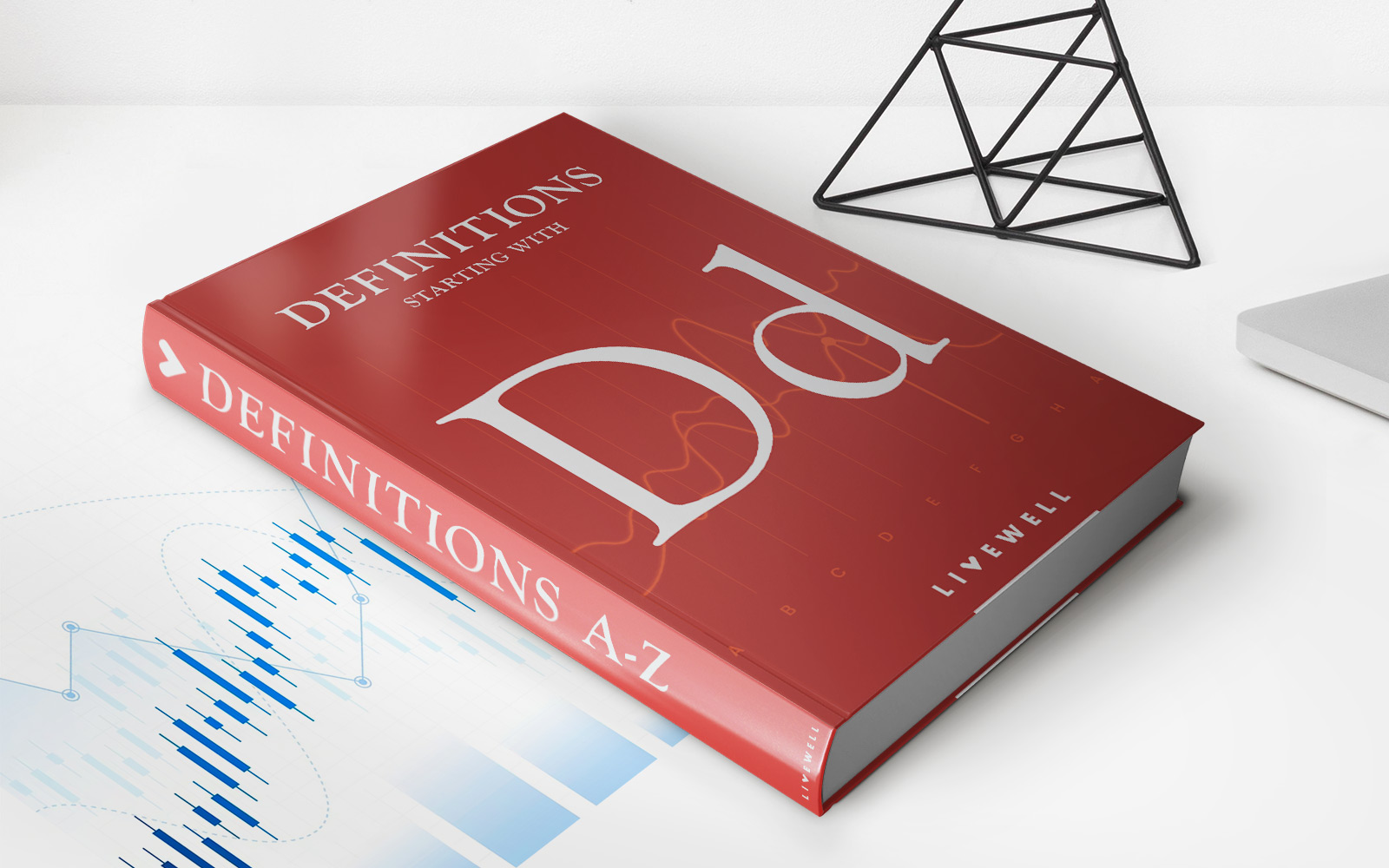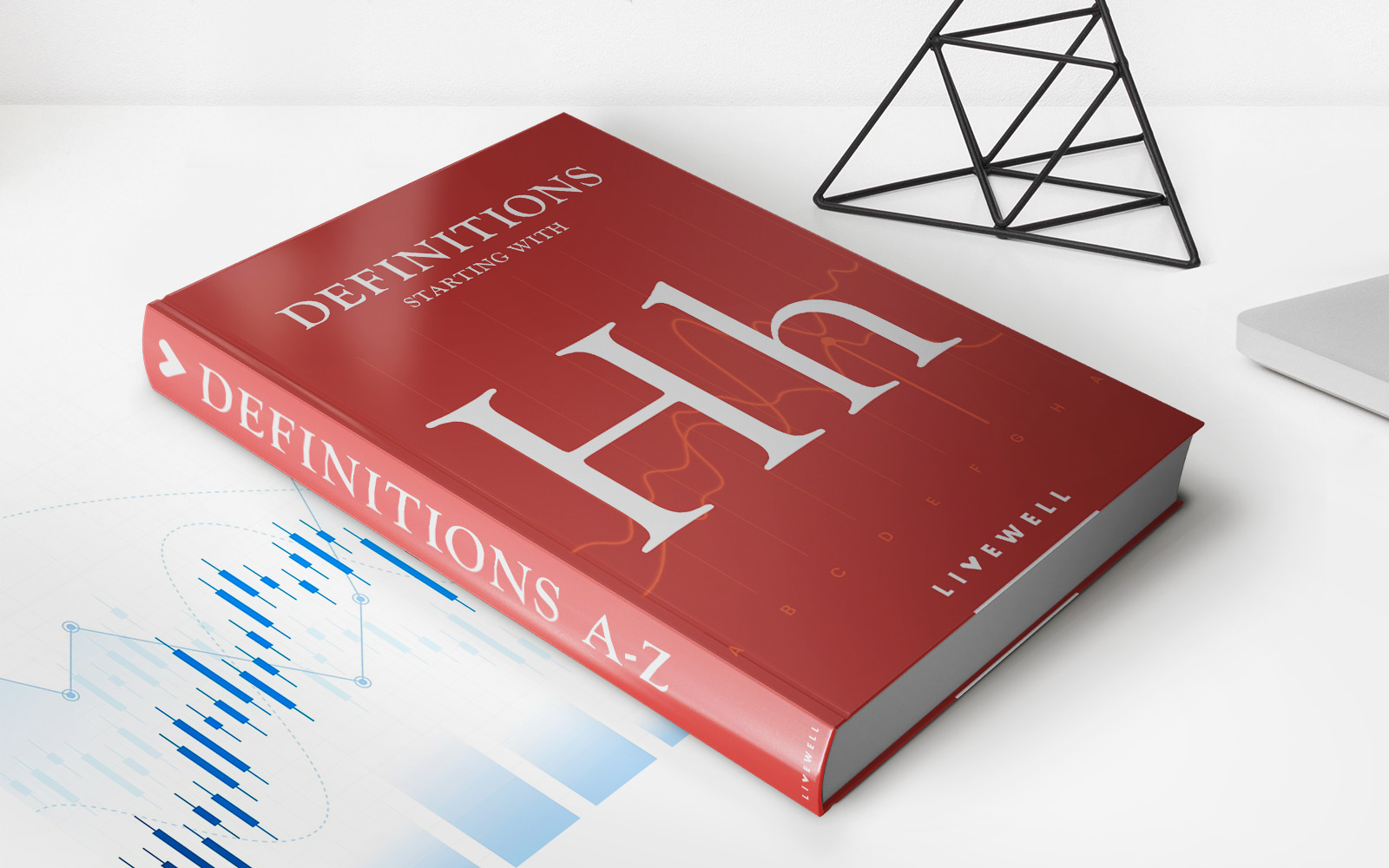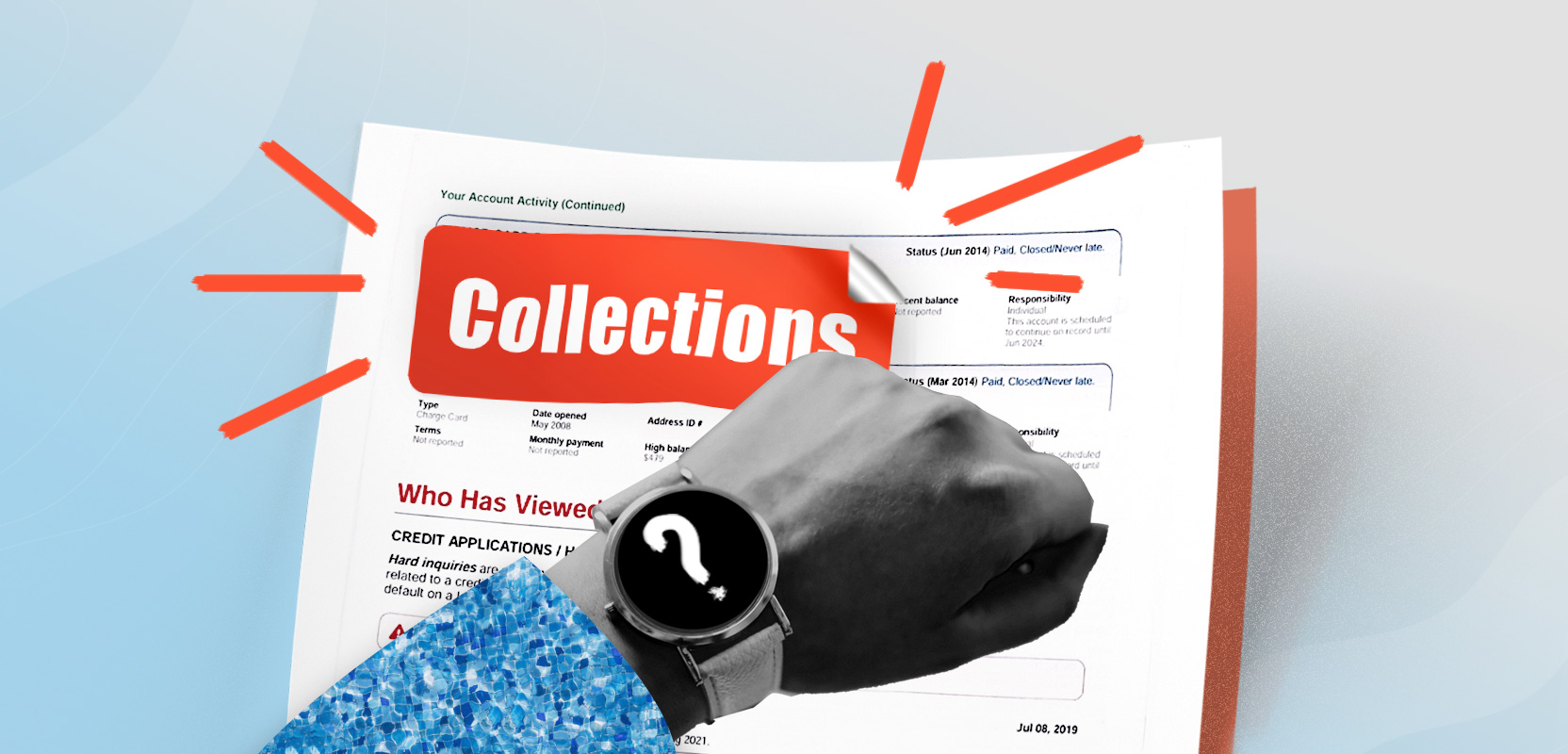

Finance
What If My Employer Doesn’t Offer A 401K
Published: October 17, 2023
Find out what to do if your employer doesn't offer a 401K plan and learn alternative ways to finance your retirement.
(Many of the links in this article redirect to a specific reviewed product. Your purchase of these products through affiliate links helps to generate commission for LiveWell, at no extra cost. Learn more)
Table of Contents
Introduction
When it comes to planning for retirement, one of the most common tools individuals have at their disposal is a 401(k) plan. However, not every employer offers this type of retirement account to their employees. If you find yourself in this situation, you may be wondering what alternatives are available to you and how you can still save for the future.
A 401(k) plan is a powerful investment vehicle that allows employees to contribute a portion of their salary towards retirement on a pre-tax basis. These contributions can grow over time through various investment options, and the funds are typically not subject to taxes until they are withdrawn during retirement.
While having access to a 401(k) plan is certainly advantageous, not having one offered by your employer doesn’t mean you’re out of luck. There are several alternative retirement savings options that you can consider to ensure you’re still making progress towards your long-term financial goals.
In this article, we’ll explore some of the alternative options available and how they can help you save for retirement when a 401(k) plan isn’t on the table. From individual retirement accounts (IRAs) to taxable investment accounts, we’ll provide you with a comprehensive overview of each option, including their benefits and potential drawbacks.
It’s important to note that while these alternative options can be effective in saving for retirement, you should also consult with a financial advisor to tailor a strategy that aligns with your specific financial situation and goals.
Now, let’s dive into some of the alternative retirement savings options that you can explore if your employer doesn’t offer a 401(k) plan.
Understanding the Importance of a 401(k) Plan
Before we delve into the alternatives, it’s essential to understand the importance of a 401(k) plan and why it’s a widely preferred retirement savings option. A 401(k) plan offers numerous advantages that can significantly impact your financial future.
Firstly, contributing to a 401(k) allows you to save for retirement on a tax-deferred basis. This means that the money you contribute is deducted from your taxable income, reducing your current tax liability. Additionally, the investment earnings within the 401(k) grow tax-free, allowing your savings to compound over time.
Furthermore, many employers offer a matching program where they contribute a certain percentage or dollar amount to your 401(k) plan based on your contributions. This is essentially free money that can significantly boost your retirement savings. It’s like receiving a pay raise without any additional income taxes.
Another advantage of a 401(k) plan is that it offers higher contribution limits compared to other retirement savings accounts. As of 2021, individuals can contribute up to $19,500 to their 401(k), with an additional $6,500 catch-up contribution allowed for those age 50 and older. This higher contribution limit allows for accelerated retirement savings growth.
Additionally, 401(k) plans often provide a range of investment options, allowing you to tailor your investments to your risk tolerance and financial goals. This flexibility enables you to diversify your portfolio and potentially earn higher returns over the long term.
Lastly, a 401(k) plan offers convenience and simplicity. Contributions are automatically deducted from your paycheck, making it easy to save consistently. You can also change your contribution rate or investment options as needed, providing flexibility and control over your retirement savings.
Given these advantages, it’s clear why a 401(k) plan is a highly desirable retirement savings tool. However, if your employer doesn’t offer this benefit, don’t worry. There are alternative options available that can still help you save for retirement effectively.
Alternatives to a 401(k) Plan
If your employer doesn’t offer a 401(k) plan, there are several alternative retirement savings options that you can consider. These alternatives provide similar benefits and can still help you build a solid financial foundation for your retirement years. Let’s explore some of these options:
- Individual Retirement Accounts (IRAs): An IRA is a personal retirement account that offers tax advantages. There are two main types of IRAs: traditional and Roth. With a traditional IRA, contributions may be tax-deductible, and investment earnings grow tax-deferred until withdrawal. On the other hand, with a Roth IRA, contributions are made with after-tax dollars, but qualified withdrawals in retirement are tax-free. Both types of IRAs offer a wide range of investment options and can be a powerful tool for retirement savings.
- Simplified Employee Pension (SEP) IRA: If you are self-employed or a small business owner, a SEP IRA can be a great alternative. It allows you to make tax-deductible contributions to your retirement account, based on a percentage of your income. Contributions can be made for both the business owner and any eligible employees. SEP IRAs offer higher contribution limits than traditional IRAs and can provide significant tax advantages.
- Simple IRA: The Simple IRA is another retirement savings option for small businesses with fewer than 100 employees. It offers higher contribution limits than traditional IRAs and allows both employers and employees to make contributions. Employers can choose to match employee contributions or make non-elective contributions. Simple IRAs are easy to set up and manage, making them a suitable alternative for employers who don’t offer a 401(k) plan.
- Health Savings Accounts (HSAs): While primarily used for medical expenses, HSAs can also serve as retirement savings vehicles. Contributions to an HSA are made with pre-tax dollars, and withdrawals are tax-free when used for qualified medical expenses. After age 65, you can withdraw funds for any purpose without penalties, although you will need to pay income taxes on the withdrawals if they are not used for medical expenses. HSAs offer triple tax advantages and can be an effective way to supplement your retirement savings.
- Taxable Investment Accounts: If you’ve maximized your contributions to other retirement accounts, you can consider investing in taxable investment accounts. While these accounts don’t offer the same tax advantages as retirement accounts, they provide flexibility in terms of access to funds before retirement age. With taxable investment accounts, you can invest in a variety of assets such as stocks, bonds, and mutual funds to grow your wealth over time.
It’s important to note that these alternative retirement savings options have their own rules and restrictions, so it’s crucial to understand them thoroughly before making any decisions. Consulting with a financial advisor can help you navigate through the options and determine the best strategy for your retirement savings goals.
Individual Retirement Accounts (IRAs)
One of the most popular alternatives to a 401(k) plan is an Individual Retirement Account (IRA). IRAs offer individuals the ability to contribute to their retirement savings on a tax-advantaged basis, providing an opportunity for their investments to grow over time. There are two main types of IRAs: traditional IRAs and Roth IRAs.
A traditional IRA allows you to make tax-deductible contributions, which means the amount you contribute is deducted from your taxable income for the year. This can potentially lower your tax liability and provide immediate tax benefits. The funds in a traditional IRA grow tax-deferred, meaning you don’t pay taxes on the gains until you withdraw the money in retirement. However, when you do withdraw the funds, they are subject to income tax at your ordinary tax rate.
On the other hand, a Roth IRA is funded with after-tax contributions. While you don’t receive an immediate tax deduction for your contributions, any qualified withdrawals in retirement are tax-free. This means that the earnings within the Roth IRA can grow tax-free over time, providing you with potentially significant tax advantages in the long run.
Both traditional and Roth IRAs offer a wide range of investment options, including stocks, bonds, mutual funds, and more. This flexibility allows you to customize your portfolio based on your risk tolerance and investment goals. It’s important to note that there are annual contribution limits for IRAs, which are set by the IRS. As of 2021, individuals can contribute up to $6,000 to an IRA, with an additional $1,000 catch-up contribution allowed for those age 50 and older.
One notable advantage of IRAs is that they are not employer-sponsored, meaning you have control over your account regardless of your employment situation. This makes IRAs a great option for individuals who are self-employed or do not have access to a 401(k) plan through their employer.
When deciding between a traditional IRA and a Roth IRA, consider factors such as your current and future tax bracket, your expected retirement income, and your financial goals. If you anticipate being in a lower tax bracket during retirement or prefer tax-free withdrawals, a Roth IRA might be a suitable choice. Alternatively, if you want to reduce your current tax liability and qualify for the immediate tax deduction, a traditional IRA might be the better option.
It’s important to remember that IRAs have certain eligibility requirements and contribution limits, so it’s essential to consult with a financial advisor to ensure you understand the rules and regulations associated with these accounts. By utilizing an IRA as an alternative to a 401(k) plan, you can still enjoy the benefits of tax-advantaged retirement savings and take control of your financial future.
Simplified Employee Pension (SEP) IRA
For self-employed individuals or small business owners who do not have access to a 401(k) plan, a Simplified Employee Pension (SEP) IRA can be an excellent alternative. A SEP IRA allows employers to make tax-deductible contributions to their own retirement account and those of eligible employees.
One of the key benefits of a SEP IRA is its simplicity and ease of administration. Setting up a SEP IRA is relatively straightforward, with minimal paperwork and administrative requirements compared to other retirement plans. Employers can establish a SEP IRA for themselves and any eligible employees by completing the necessary documentation.
Contributions to a SEP IRA are made solely by the employer and are based on a percentage of the employee’s income. Employers can contribute up to 25% of each eligible employee’s compensation or a maximum of $58,000 (2021 limits), whichever is less. It’s important to note that the same percentage of contributions must be made for all eligible employees, including the employer.
One advantage of a SEP IRA is its high contribution limit. The ability to contribute a significant percentage of income can result in substantial retirement savings over time. This makes it an attractive option for self-employed individuals and small business owners who wish to maximize their retirement savings.
Contributions to a SEP IRA are tax-deductible for the employer, which can help reduce their taxable income and potentially lower their overall tax liability. The funds within the SEP IRA grow tax-deferred, meaning they are not taxed until withdrawn during retirement.
For employees, SEP contributions do not count as taxable income until they are withdrawn. At that point, they are subject to regular income tax rates. This can be advantageous if employees anticipate being in a lower tax bracket during retirement.
Another benefit of SEP IRAs is that they offer a wide range of investment options. Employers and employees can choose from various investment vehicles, such as stocks, bonds, mutual funds, and more, to tailor their portfolios based on their risk tolerance and investment goals.
It’s worth noting that SEP IRAs do not allow for loans or catch-up contributions, unlike some other retirement plans. Additionally, if you have employees, you must contribute the same percentage of their compensation to your own SEP IRA as you do for them, which can be a consideration for employers.
To summarize, a SEP IRA is a flexible and tax-advantaged retirement savings option for self-employed individuals and small business owners. It offers high contribution limits, easy administration, and the potential for substantial retirement savings. Consulting with a financial advisor can help ensure you understand the rules and requirements associated with a SEP IRA and determine if it is the right alternative to a 401(k) plan for your specific circumstances.
Simple IRA
For small businesses with fewer than 100 employees, the Simple IRA (Savings Incentive Match Plan for Employees) can be an attractive alternative to a 401(k) plan. The Simple IRA is designed to provide a simplified retirement savings option for employers and employees alike.
One of the primary advantages of a Simple IRA is its ease of administration. Setting up and maintaining a Simple IRA is relatively straightforward, with fewer administrative responsibilities compared to a traditional 401(k) plan. This makes it an appealing choice for small businesses that may not have the resources or expertise to manage a more complex retirement plan.
The Simple IRA allows both employers and employees to contribute to the retirement plan. Employers have two options for contributing: they can match employee contributions up to 3% of the employee’s compensation or contribute a fixed 2% of each employee’s compensation, regardless of whether the employee contributes or not. This flexibility provides employers with choices based on their financial capabilities and desire to incentivize employee savings.
Employees can make contributions to their Simple IRA through salary deferrals. The employee contribution limit for 2021 is $13,500, with an additional catch-up contribution of $3,000 allowed for those age 50 and older. These contributions are made on a pre-tax basis, meaning they reduce the employee’s taxable income for the year. The funds within the Simple IRA grow tax-deferred until withdrawal in retirement.
A unique feature of the Simple IRA is that it has lower administrative costs compared to many other retirement plans. This can be advantageous for small businesses with limited budgets or resources, as it allows them to offer their employees a valuable retirement savings benefit without incurring significant expenses.
Like other retirement accounts, a Simple IRA offers a variety of investment options to help employees grow their savings over time. Employees can choose from a range of investment vehicles such as mutual funds, stocks, bonds, and more, allowing them to customize their portfolio based on their risk tolerance and investment preferences.
It’s important to note that early withdrawals from a Simple IRA may be subject to a penalty if made before the age of 59 1/2, similar to other retirement accounts. However, there are exceptions to this penalty, such as for first-time homebuyers or individuals experiencing certain financial hardships.
In summary, a Simple IRA can provide a straightforward and cost-effective retirement savings option for small businesses and their employees. With its easy administration, employer contribution options, and pre-tax employee contributions, it offers a valuable alternative to a 401(k) plan. Employers should consult with a financial advisor to ensure they understand the requirements and benefits of a Simple IRA and how it can fit into their overall retirement savings strategy.
Health Savings Accounts (HSAs)
While primarily used for healthcare expenses, Health Savings Accounts (HSAs) can also serve as a valuable alternative for retirement savings. HSAs are available to individuals who have a high-deductible health insurance plan and provide a unique triple tax advantage.
Contributions to an HSA are made with pre-tax dollars, meaning they are deducted from your taxable income for the year. This provides an immediate tax benefit by reducing your overall tax liability. Additionally, the funds within an HSA can grow tax-free through investment options such as mutual funds, stocks, and bonds.
The most significant advantage of an HSA is that withdrawals for qualified medical expenses are tax-free. This means that any money you contribute and earn in your HSA can be used to pay for medical expenses without incurring additional taxes. This tax-free feature extends to retirement as well. After age 65, you can withdraw funds from your HSA for any purpose without penalties, although withdrawals not used for medical expenses will be subject to income tax.
The ability to utilize HSAs as a retirement savings tool is particularly advantageous for individuals who have minimal healthcare expenses and can afford to pay for medical costs out of pocket. By allowing the funds in the HSA to grow over time, you can potentially accumulate a significant amount of savings that can be used for healthcare expenses in retirement.
HSAs have contribution limits, which are set by the IRS each year. For 2021, the maximum contribution limits are $3,600 for individuals and $7,200 for families. If you are age 55 or older, you can also make an additional catch-up contribution of $1,000. It’s important to note that these contributions are not “use it or lose it” like Flexible Spending Accounts (FSAs). The funds in an HSA roll over from year to year, allowing you to accumulate savings for future healthcare expenses.
To contribute to an HSA, you must have a high-deductible health insurance plan with minimum deductible and maximum out-of-pocket limits set by the IRS. These plans typically have lower monthly premiums but require you to pay a higher deductible before your insurance coverage begins. HSAs can provide an excellent combination of affordable healthcare coverage and long-term retirement savings.
It’s important to consult with a financial advisor or tax professional to understand the specific rules and regulations surrounding HSAs, as well as how they can fit into your overall retirement savings strategy. With their triple tax advantage and flexibility in saving for healthcare expenses, HSAs can be a valuable alternative to a 401(k) plan for supplementing your retirement savings and ensuring financial security in your later years.
Roth IRAs
When it comes to alternative retirement savings options, Roth IRAs are an attractive choice for individuals who don’t have access to a 401(k) plan. Roth IRAs offer unique tax advantages and flexibility that can help you build a tax-free income stream in retirement.
With a Roth IRA, contributions are made with after-tax dollars, meaning you don’t receive an immediate tax deduction for your contributions. However, the real benefit comes in retirement. Qualified withdrawals from a Roth IRA are tax-free, including both the contributions made and the earnings on those contributions. This can be a significant advantage for individuals who anticipate being in a higher tax bracket in retirement or want to minimize their future tax liability.
Roth IRAs have annual contribution limits, which are set by the IRS. For 2021, the maximum contribution limit for individuals is $6,000, with an additional catch-up contribution of $1,000 allowed for those age 50 and older. These contribution limits can be combined with any contributions made to other retirement accounts, such as a 401(k) or traditional IRA.
One notable advantage of Roth IRAs is their flexibility. Unlike traditional retirement accounts, you are not required to take mandatory distributions from a Roth IRA when you reach a certain age. This allows your investments to continue growing tax-free for as long as you wish. This flexibility can be beneficial for individuals who don’t want to be forced to withdraw funds if they don’t need them or who want to pass on a tax-free inheritance to their beneficiaries.
Another advantage of Roth IRAs is their accessibility. While contributions to a Roth IRA are subject to income limitations, there are no restrictions on who can convert a traditional IRA to a Roth IRA, regardless of income level. This gives individuals the opportunity to take advantage of the tax-free growth and withdrawals offered by Roth IRAs.
Roth IRAs offer a wide range of investment options, allowing you to diversify your portfolio based on your risk tolerance and investment goals. You can invest in various assets, including stocks, bonds, mutual funds, and more. These investment options provide an opportunity for your savings to grow over time and potentially outpace inflation.
It’s important to note that there are certain rules and restrictions associated with Roth IRAs. For instance, there are income limits for contributing directly to a Roth IRA. Additionally, if you withdraw earnings before age 59 1/2 and before the account has been open for at least five years, you may be subject to taxes and penalties on those earnings.
Consulting with a financial advisor can help you determine if a Roth IRA is the right alternative retirement savings option for you. They can provide guidance on contribution limits, income eligibility, investment choices, and other important considerations to ensure you make the most of this tax-advantaged account.
In summary, Roth IRAs offer attractive tax advantages and flexibility for individuals without access to a 401(k) plan. By contributing after-tax dollars and enjoying tax-free withdrawals in retirement, you can create a tax-efficient income stream and potentially increase your long-term financial security.
Taxable Investment Accounts
When it comes to alternative retirement savings options, taxable investment accounts can provide flexibility and accessibility for individuals without access to a 401(k) plan. While these accounts do not offer the same tax advantages as retirement-specific accounts, they can still play a valuable role in long-term wealth building.
A taxable investment account, also known as a brokerage or individual investment account, allows individuals to invest in various assets such as stocks, bonds, mutual funds, exchange-traded funds (ETFs), and more. Unlike retirement-specific accounts, there are no contribution limits or restrictions on when you can access the funds in these accounts.
One of the main advantages of taxable investment accounts is their flexibility. You can contribute as much or as little as you want, and there are no penalties for early withdrawals. This can be beneficial for individuals who may need access to their funds before reaching retirement age or who want to supplement their other retirement savings accounts.
While contributions to taxable investment accounts are made with after-tax dollars, the earnings on your investments are subject to taxation. However, the tax treatment of investment gains depends on various factors, such as your tax bracket, the type of investment, and how long you held the investment. Dividends and interest earned from investments may also be subject to taxes.
It’s important to note that certain investment strategies, such as buy-and-hold investing or investing in tax-efficient funds, can help minimize tax liabilities in taxable investment accounts. Additionally, long-term capital gains (investments held for more than one year) are typically taxed at a lower rate than short-term capital gains (investments held for one year or less).
Taxable investment accounts can provide individuals with the opportunity for growth and potential capital appreciation over time. With a diverse range of investment options available, you can tailor your portfolio to your risk tolerance and investment goals. It’s important to carefully research and monitor your investments or seek guidance from a financial advisor to ensure that you are making sound investment decisions.
While taxable investment accounts do not offer the same tax advantages as retirement-specific accounts, they can still play a valuable role in your overall financial strategy. By consciously selecting investments and considering the tax implications, you can effectively grow your wealth and potentially accumulate a significant nest egg for retirement.
In summary, taxable investment accounts provide flexibility and accessibility for individuals without access to a 401(k) plan. By investing in a diverse range of assets, you have the potential to generate wealth and supplement your other retirement savings accounts. It’s important to understand the tax implications and manage your investments wisely to optimize your long-term financial goals.
Maximizing Other Employer-Provided Benefits
If your employer does not offer a 401(k) plan, it’s important to explore and take full advantage of other benefits they may provide. While these benefits may not directly contribute to your retirement savings, they can still have a positive impact on your overall financial well-being. Here are some employer-provided benefits to consider maximizing:
- Health Insurance: Review your employer’s health insurance offerings to ensure you have the coverage you need. Health-related expenses can directly impact your finances, so having comprehensive coverage can help protect your savings. Additionally, some health plans offer health savings accounts (HSAs), which we discussed earlier as a potential retirement savings alternative.
- Employer Match on Other Contributions: Even if your employer does not offer a 401(k) plan, they may still provide matching contributions for other types of accounts, such as a SEP IRA or Simple IRA. If available, contribute enough to receive the full employer match. This is essentially free money that can significantly boost your retirement savings.
- Flexible Spending Accounts (FSAs): FSAs allow you to set aside pre-tax dollars to pay for eligible medical expenses or dependent care costs. While not specifically a retirement savings vehicle, utilizing FSAs can help lower your taxable income and free up more money to contribute to other retirement accounts or financial goals.
- Paid Time Off and Vacation Days: Take advantage of your employer’s paid time off or vacation benefits. Time away from work is essential for relaxation, rejuvenation, and maintaining a healthy work-life balance. By using your vacation days, you can achieve a better overall quality of life and lower stress levels, which can positively impact your financial well-being.
- Employee Stock Purchase Plans (ESPPs): Some companies offer ESPPs that allow employees to purchase company stock at a discounted price. While investing in a single company carries risks, participating in an ESPP can be an opportunity to acquire company shares at a discount and potentially grow your wealth over time. However, be sure to diversify your overall investment portfolio to minimize risk.
- Professional Development and Educational Opportunities: Many employers offer opportunities for career development and further education, such as training programs or tuition reimbursement. Taking advantage of these benefits can enhance your skills, increase your earning potential, and contribute to a more secure financial future.
By maximizing these employer-provided benefits, you can improve your overall financial position and create opportunities for increased savings. While they may not directly contribute to a retirement account, they can free up resources and reduce expenses, allowing you to allocate more towards your long-term financial goals.
It’s important to familiarize yourself with the specific benefits offered by your employer and understand how they can fit into your overall financial strategy. Take the time to review the details, assess the value they provide, and leverage them effectively to enhance your financial well-being.
Conclusion
Not having access to a 401(k) plan through your employer doesn’t mean you can’t effectively save for retirement. By exploring alternative options and maximizing other employer-provided benefits, you can still build a solid financial foundation for your future.
Firstly, Individual Retirement Accounts (IRAs), including traditional IRAs and Roth IRAs, offer tax advantages and diverse investment options. These accounts provide individuals with the flexibility to contribute and grow their savings on a tax-advantaged basis.
For self-employed individuals and small business owners, Simplified Employee Pension (SEP) IRAs and Simple IRAs can be attractive alternatives. These plans offer high contribution limits and simplicity in administration, providing opportunities for significant retirement savings.
Health Savings Accounts (HSAs) can serve a dual purpose as a health expense fund and a retirement savings vehicle. With their triple tax advantage, HSAs can provide tax-free growth and withdrawals, making them an appealing option for individuals with high-deductible health insurance plans.
Taxable investment accounts offer flexibility and accessibility, allowing individuals to invest in various assets and potentially grow their wealth over time. While these accounts don’t provide the same tax advantages as retirement-specific accounts, they can still play a role in long-term financial planning.
Additionally, maximizing other employer-provided benefits, such as health insurance and employer matches on other contributions, can enhance your overall financial well-being. These benefits, while not directly contributing to retirement savings, can free up resources and reduce expenses, allowing you to allocate more towards your long-term financial goals.
It’s important to evaluate your financial situation, goals, and risk tolerance when considering these alternative options. Consulting with a financial advisor can provide valuable guidance and help you create a tailored retirement savings strategy that aligns with your unique circumstances.
Remember, the key to successful retirement planning is to start early and be consistent. By taking action now and exploring alternative retirement savings options, you can set yourself up for a secure and fulfilling retirement, regardless of whether or not you have access to a 401(k) plan through your employer.














